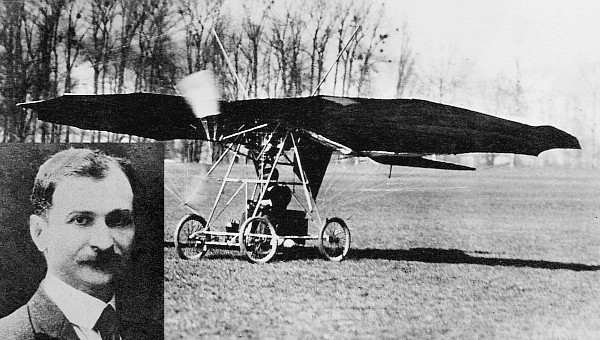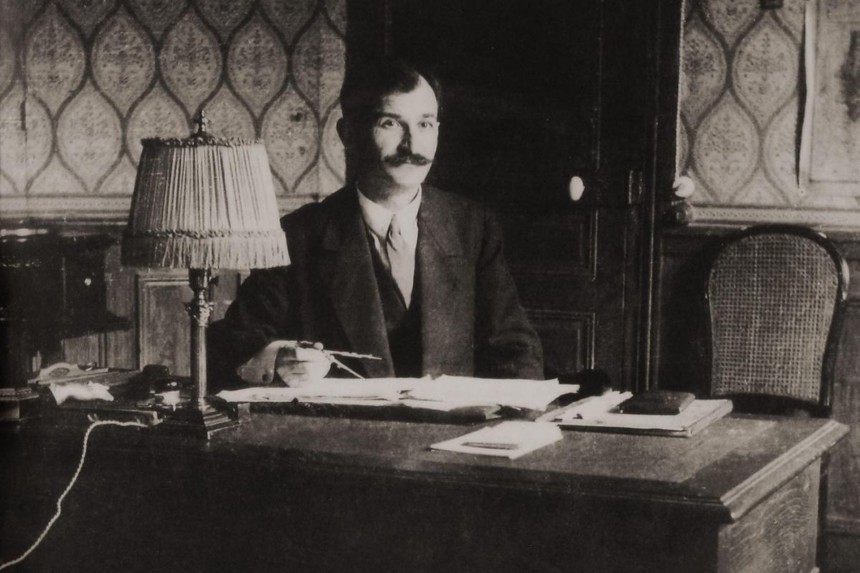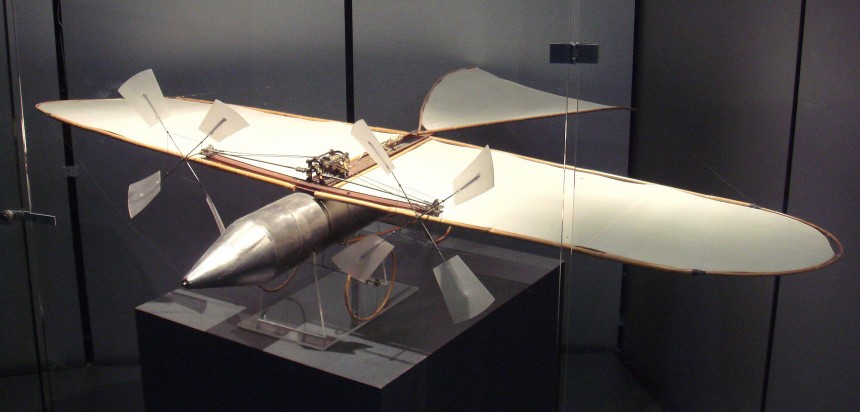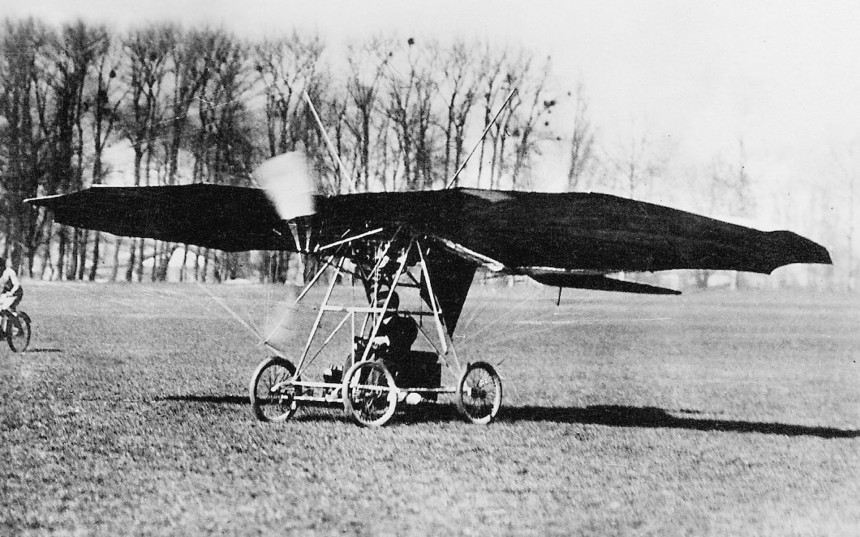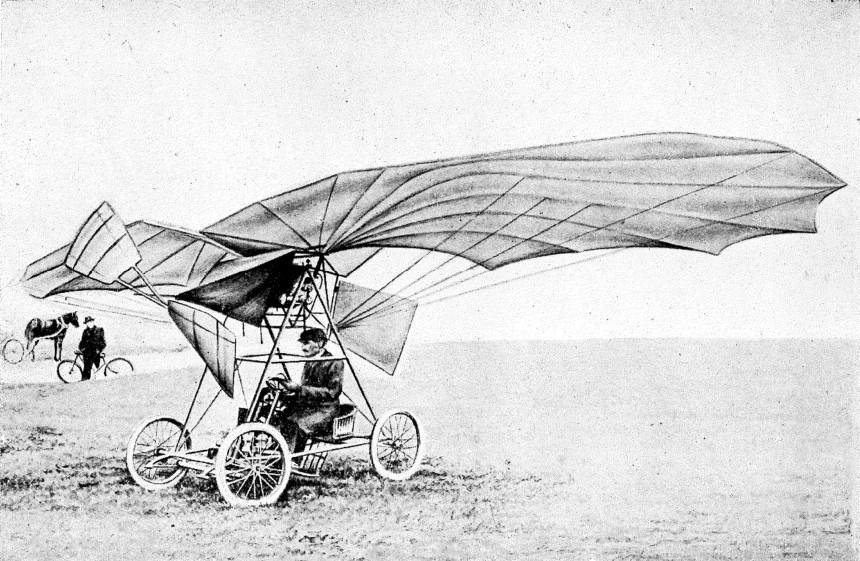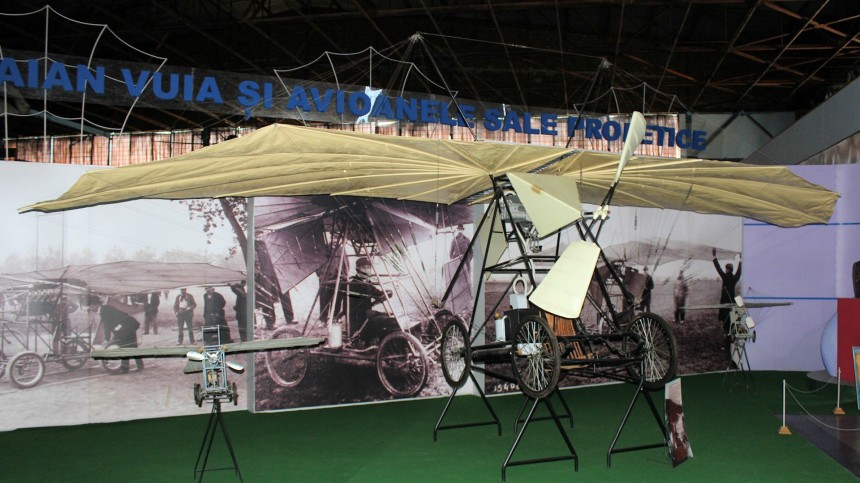The Wright Brothers tend to be the only household names left from the pioneer days of aviation. 120 years of time tends to whittle down the names in history books. But maybe it's time to set the record straight. There were plenty of lesser-known aviators from the very earliest days that faded from popular memory. In America, this person was Glenn Curtiss, who we've covered several times before.
But in Europe, there's another cornerstone aviator who, in some ways, was even better at building airplanes than the Wright Brothers. He's a Romanian national by the name of Traian Vuia, and he's so important to the history of aviation that the town he was born in was renamed in his honor. You can't say the same thing about Dayton, Ohio.
It's not hard to compare Traian Vuia's life and exploits to that of two brothers who lived at least 5,100 miles away over in America. It just so happens that Vuia's priest of a father, Simon Popescu, worked in a similar religious profession as Wilbur and Orville Wright's clergyman father. In a move that was quite rare in the day, the young Traian took on the surname of his mother, Ana, in his adulthood.
The fundamentals of flight and basic aerodynamics might have been a total mystery to the average Eastern European peasant of the day. But that didn't stop Traian Vuia's young mind from gazing at the heavens, seething with jealousy as all the pheasants, pigeons, doves, and geese native to nowaday's Western Romania flying with an effortlessness that inspired him to learn their secrets.
Though the flight was Vuia's primordial passion, there were more important things to attend to in a young Romanian man's life during the late 1800s. Longing for the young Traian to escape the humdrum life of the local working class, Vuia's parents encouraged him to attend university once his schooling at the Roman Catholic High School in the city of Lugoj was completed in 1892.
While at school, Vuia's teachers taught him ancient legends like the story of Icarus and his flight too close to the sun. These lessons only reinforced a notion in Vuia's head, which only reinforced his life-long passion for flight. Now complete with preliminary schooling, Vuia moved to Budapest and attempted to earn a degree in engineering there at the city's school of mechanics. Legend has it that financial difficulties plagued Vuia during his time there, which led him to leave after a year.
Once finished, Vuia set his sights on earning a Ph.D. in law again in Budapest. All the while, Vuia worked odd jobs to be able to afford the tuition. Working full-time while going to school is a tall order for people with laptops and cell phones. But back in early 1901, this was a simply herculean effort. It all paid off in the end, as Vuia graduated magna cum laude with his degree in law.
With newfound skills from Budapest now enshrined in his memory, Vuia returned to Romania. Now ready to apply what he'd learned to attempt what the Wright Brothers were also aspiring to. That being a heavier-than-air, powered, and controlled flight of an aircraft. But he alone wouldn't be able to pull it off, not that there weren't other talented flight pioneers in Europe that Vuia could draw inspiration from.
One such man was a French national by the name of Victor Tatin. Back in 1879, Tatin constructed a model airplane approximately two meters long (6 ft 3 in) and weighing around 1.8 kilos (4 lbs) with twin propellers and a single engine running on compressed air. Tethered to a pole so as not to crash, the model became the first of its kind to achieve sustained flight. If there was a man in all of Europe who could help Traian Vuia, it was Tatin.
In the primordial days of aviation, two locations thousands of miles apart became hotbeds where the founding members of human-crewed aviation gathered and discussed ideas and tested their prototypes. One was a region known as the Hempstead Plains in Long Island, New York, just east of New York City. But the other was the grassy fields just outside of Paris, France. Vuia traveled to Paris in 1902 with the purpose of seeking out Victor Tatin and building a working airplane.
The suave young Romanian wowed Tatin with his vision of a propeller-driven crewed airplane but doubted an internal combustion engine existed in the day that was capable of getting the job done. As a result, Tatin doubted the project was possible altogether at first.
Of course, the Wright Flyer that would finally bring mankind to the sky the following year had many of the same problems. Reports from the period claim the thing was even close to uncontrollable. But perhaps the single item the first Wright Flyer excelled in was the very thing Victor Tatin feared insurmountable, its home-built, 201-cubic inch straight-four engine jetting 12 horsepower.
Though not yet aware of the Wright Brother's exploits in Ohio, Vuia was certain that with clever engineering and quality build materials, he could source an engine sufficient for the job. In February 1903, less than a year before that fateful day in Kitty Hawk, North Carolina, Vuia submitted a design proposal to the French Academy of Sciences in Paris titled "Project of an Airplane Car."
Because early 20th-century inventors are often notorious for being finicky and eccentric people, the first reaction to Vuia's design was less than receptive. In the same way, it took Americans some time to warm up to an ICE-electric hybrid; members of the French Academy of Sciences thought this strange chimera of a car and an airplane to be bizarre, even almost offensive to their old-school sensibilities.
That didn't stop Traian Vuia from obtaining a patent for his design in August 1903. As Orville and Wilbur Wright toiled away on the Wright Flyer I back in Dayton, Vuia was on the precipice of being able to build something even better, if not the first. A century before gofundme.com, Vuia and his hometown friends back in Lugoj crowd-sourced enough money to bring his creation off the drawing board and into our mortal reality.
Powered by a bizarre 20 horsepower engine running not on gasoline but carbonic acid, Victor Tatin himself designed the twin-blade propellers, which mounted on the front of this peculiar parasol-style monoplane. Perhaps the most striking feature of what Vuia nicknamed "Liliacul" (Romanian for the Bat) was the addition of four pneumatic rubber tires seemingly borrowed from a small motorbike or bicycle. The front wheels even sported a rudimentary suspension system with leaf springs.
As anyone who's seen photos of the Wright Flyer knows, Wilbur and Orville dragged their heels mightily on adopting fixed-wheel landing gears on their airplanes. In what some historians attribute as an overdose of pride, the Wright Brothers seemed convinced their rail-launched catapult system was a far better solution for taking off than wheeled landing gears. This was a notion Vuia proved false on 18 March 1906, when the Vuia I made its first flight outside Paris to a height of roughly one meter (3.3 feet).
Granted, Vuia may have hit a tree and damaged the airframe on his first time out. But that made no difference to the achievement the man had chalked up that fateful. The airplane flew several more times before an extensive set of modifications turned the plane into the updated Vuia-1bis. By 1907, the Vuia II, powered by a French Antoinette 25 horsepower engine, was ready to fly. Doing so twice before an injury after one hard landing prevented Vuia from flying it again.
Add on two semi-functional concepts for a rotary helicopter built with help from Marcel Yvonneau in 1918 and 1922, and Traian Vuia's accomplishments in aviation rival that of other all-time great pioneer aviators. People like Alberto Santos-Dumont, Igor Sikorsky, and, of course, Orville and Wilbur Wright. For most people, that would already be a life well celebrated.
But after obtaining French citizenship in 1918, Vuia began a less discussed second chapter of his life as a key figure representing all Romanians living under King Ferdinand I. Come the Second World War, Vuia was a key figure representing Transylvanian/Romanian ex-pats in France, helping form the backbone of French resistance to the Germans.
Though he lived in France for most of his adult life, the newly formed Communist government of Romania convinced him to return in 1950. Upon arriving, Vuia desperately wished that they hadn't. With his homeland now under the jackboot of Stalin, the once thriving people of his homeland already showed the symptoms of living under the proxy worst authoritarian who ever lived. Vuia died in September 1950, sticking around just long enough to take in how profoundly the Soviets had subjugated his people.
Today, the Romanian communists are long gone, and Vuia remains one of the most influential Romanians of the 20th century. He's buried in Bellu Cemetery, the largest and most famous in the Romanian capital of Bucharest. Though perhaps a victim of a nationality not as adept at marketing as the Wrights were, the record will always state that Traian Vuia's airplanes were considerably more practical.
We haven't seen any catapult-launched aircraft not flying off an aircraft carrier for over a century now, and it should be evident there's a good reason for that.
It's not hard to compare Traian Vuia's life and exploits to that of two brothers who lived at least 5,100 miles away over in America. It just so happens that Vuia's priest of a father, Simon Popescu, worked in a similar religious profession as Wilbur and Orville Wright's clergyman father. In a move that was quite rare in the day, the young Traian took on the surname of his mother, Ana, in his adulthood.
The fundamentals of flight and basic aerodynamics might have been a total mystery to the average Eastern European peasant of the day. But that didn't stop Traian Vuia's young mind from gazing at the heavens, seething with jealousy as all the pheasants, pigeons, doves, and geese native to nowaday's Western Romania flying with an effortlessness that inspired him to learn their secrets.
Though the flight was Vuia's primordial passion, there were more important things to attend to in a young Romanian man's life during the late 1800s. Longing for the young Traian to escape the humdrum life of the local working class, Vuia's parents encouraged him to attend university once his schooling at the Roman Catholic High School in the city of Lugoj was completed in 1892.
Once finished, Vuia set his sights on earning a Ph.D. in law again in Budapest. All the while, Vuia worked odd jobs to be able to afford the tuition. Working full-time while going to school is a tall order for people with laptops and cell phones. But back in early 1901, this was a simply herculean effort. It all paid off in the end, as Vuia graduated magna cum laude with his degree in law.
With newfound skills from Budapest now enshrined in his memory, Vuia returned to Romania. Now ready to apply what he'd learned to attempt what the Wright Brothers were also aspiring to. That being a heavier-than-air, powered, and controlled flight of an aircraft. But he alone wouldn't be able to pull it off, not that there weren't other talented flight pioneers in Europe that Vuia could draw inspiration from.
One such man was a French national by the name of Victor Tatin. Back in 1879, Tatin constructed a model airplane approximately two meters long (6 ft 3 in) and weighing around 1.8 kilos (4 lbs) with twin propellers and a single engine running on compressed air. Tethered to a pole so as not to crash, the model became the first of its kind to achieve sustained flight. If there was a man in all of Europe who could help Traian Vuia, it was Tatin.
The suave young Romanian wowed Tatin with his vision of a propeller-driven crewed airplane but doubted an internal combustion engine existed in the day that was capable of getting the job done. As a result, Tatin doubted the project was possible altogether at first.
Of course, the Wright Flyer that would finally bring mankind to the sky the following year had many of the same problems. Reports from the period claim the thing was even close to uncontrollable. But perhaps the single item the first Wright Flyer excelled in was the very thing Victor Tatin feared insurmountable, its home-built, 201-cubic inch straight-four engine jetting 12 horsepower.
Though not yet aware of the Wright Brother's exploits in Ohio, Vuia was certain that with clever engineering and quality build materials, he could source an engine sufficient for the job. In February 1903, less than a year before that fateful day in Kitty Hawk, North Carolina, Vuia submitted a design proposal to the French Academy of Sciences in Paris titled "Project of an Airplane Car."
That didn't stop Traian Vuia from obtaining a patent for his design in August 1903. As Orville and Wilbur Wright toiled away on the Wright Flyer I back in Dayton, Vuia was on the precipice of being able to build something even better, if not the first. A century before gofundme.com, Vuia and his hometown friends back in Lugoj crowd-sourced enough money to bring his creation off the drawing board and into our mortal reality.
Powered by a bizarre 20 horsepower engine running not on gasoline but carbonic acid, Victor Tatin himself designed the twin-blade propellers, which mounted on the front of this peculiar parasol-style monoplane. Perhaps the most striking feature of what Vuia nicknamed "Liliacul" (Romanian for the Bat) was the addition of four pneumatic rubber tires seemingly borrowed from a small motorbike or bicycle. The front wheels even sported a rudimentary suspension system with leaf springs.
As anyone who's seen photos of the Wright Flyer knows, Wilbur and Orville dragged their heels mightily on adopting fixed-wheel landing gears on their airplanes. In what some historians attribute as an overdose of pride, the Wright Brothers seemed convinced their rail-launched catapult system was a far better solution for taking off than wheeled landing gears. This was a notion Vuia proved false on 18 March 1906, when the Vuia I made its first flight outside Paris to a height of roughly one meter (3.3 feet).
Add on two semi-functional concepts for a rotary helicopter built with help from Marcel Yvonneau in 1918 and 1922, and Traian Vuia's accomplishments in aviation rival that of other all-time great pioneer aviators. People like Alberto Santos-Dumont, Igor Sikorsky, and, of course, Orville and Wilbur Wright. For most people, that would already be a life well celebrated.
But after obtaining French citizenship in 1918, Vuia began a less discussed second chapter of his life as a key figure representing all Romanians living under King Ferdinand I. Come the Second World War, Vuia was a key figure representing Transylvanian/Romanian ex-pats in France, helping form the backbone of French resistance to the Germans.
Though he lived in France for most of his adult life, the newly formed Communist government of Romania convinced him to return in 1950. Upon arriving, Vuia desperately wished that they hadn't. With his homeland now under the jackboot of Stalin, the once thriving people of his homeland already showed the symptoms of living under the proxy worst authoritarian who ever lived. Vuia died in September 1950, sticking around just long enough to take in how profoundly the Soviets had subjugated his people.
We haven't seen any catapult-launched aircraft not flying off an aircraft carrier for over a century now, and it should be evident there's a good reason for that.
